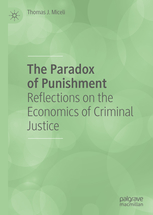A working paper has been released by the National Bureau of Economic Research that examines the impact of COVID-19 on minority unemployment through the most recent release of Current Population Survey (CPS) data for April of 2020.
The research finds that unemployment of blacks (at 16.6 percent) has not been impacted as severely as during past downturns although their unemployment rate is above the national average of 14.7 percent. In comparison, Latinx unemployment (at 18.2 percent) has been much more impacted than in recent months or the Great Recession. Historically, unemployment of blacks would be greater than that of Latinx throughout the business cycle. In the April CPS data, for the first time, unemployment of Latinx is higher. The analysis reveals that the disproportionate impact among the Latinx is related to lower levels of education, less work experience, and a concentration of employment in industries and occupations that left them more vulnerable to job loss.
The research is co-authored by Robert Fairlie of the University of California Santa Cruz, UConn Faculty member Ken Couch, and Huanan Xu of Indiana University South Bend. Xu is an alumni of the UConn Ph.D. program in economics.
The working paper can be found at this link:
 The Social Science Research Network (SSRN), a platform for dissemination of early-stage research, recently announced their all-time top ten downloaded papers in the topic Data Visualization. Oskar Harmon’s paper “Learning Tableau: A Data Visualization Tool” with Steven Batt, and Paul Tomolonis was among that list.
The Social Science Research Network (SSRN), a platform for dissemination of early-stage research, recently announced their all-time top ten downloaded papers in the topic Data Visualization. Oskar Harmon’s paper “Learning Tableau: A Data Visualization Tool” with Steven Batt, and Paul Tomolonis was among that list. The Human Capital and Economic Opportunity
The Human Capital and Economic Opportunity Professor Thomas Miceli has published The Paradox of Punishment: Reflections on the Economics of Criminal Justice.
Professor Thomas Miceli has published The Paradox of Punishment: Reflections on the Economics of Criminal Justice.